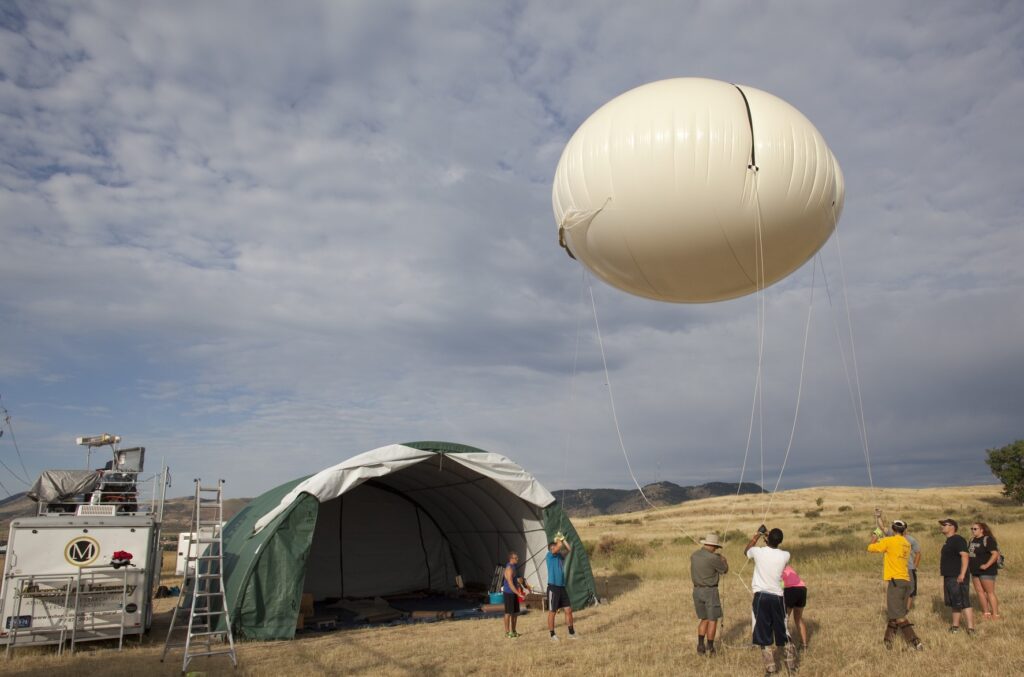The National Weather Service (NWS) – part of the National Oceanic and Atmospheric Administration (NOAA) – recently announced that it was reducing the number of weather balloons it launches across the country, citing staffing shortages at 11 NWS locations.
The launch cuts followed NOAA’s announcement of hundreds of layoffs or voluntary resignations across the agency, including at the NWS, related to efforts by President Donald Trump’s Department of Government Efficiency (DOGE). Former NOAA Administrator Rick Spinrad said in a press conference that about 650 NOAA employees were among those fired, and his former colleagues in the agency said they had been ordered to “identify another 1,029 positions” for termination.
Some of these suspensions – for example, in Omaha, Neb. – have been lifted. Two meteorologists are set to arrive from across the country to staff the Omaha office following lobbying from Rep. Mike Flood (R. – Neb).
However, the future of launches from the remaining 10 locations remains unclear.
What do weather ballons do?
Apart from occasionally being taken for extraterrestrial aircraft, weather balloons rarely attract public attention. Carrying a device called a “radiosonde”, they typically fly for a couple of hours – potentially reaching 100,000 feet – and are used for several purposes, from gathering data for weather prediction models and local forecasts to providing input for pollution and climate research.
“Weather balloon launches can be especially critical in severe storm situations,” said Dr. Phil Klotzbach, a researcher at Colorado State University and a Triple-I non-resident scholar. “They give us detailed information on temperature, pressure, and humidity that can help us determine potential impacts from tornadoes and hail.”
In addition, Klotzbach said, before U.S. hurricane landfalls, “NWS offices will often coordinate additional weather balloon launches to provide critical data to weather forecast models that improve predictions of the hurricane’s track.”
“While satellite technology continues to improve and provides invaluable information that has dramatically improved forecasting ability over the past several decades, weather balloons still serve a vital role in helping to predict weather events,” Klotzbach said.
Taken-for-granted resources highlighted
As with the Federal Emergency Management Agency’s recent termination of its Building Resilient Infrastructure and Communities (BRIC) grant and loan program, the sudden and substantial downsizing of NOAA’s data-gathering and forecasting resources underscores the extent to which government agencies that operate below the public’s radar screen help society and industry take steps to avoid costly losses related to weather- and climate-related events.
In the absence of reliable federal support, it’s more important than ever for families, communities, businesses, and other stakeholders to work together to mitigate risks and build resilience. The insurance industry is uniquely well positioned to support and advance these efforts.
Learn More:
BRIC Funding Loss Underscores Need for Collective Action on Climate Resilience
Claims Volume Up 36% in 2024; Climate, Costs, Litigation Drive Trend
Data Fuels the Assault on Climate-Related Risk
JIF 2024: Collective, Data-Driven Approaches Needed to Address Climate-Related Perils
Accurately Writing Flood Coverage Hinges on Diverse Data Sources
